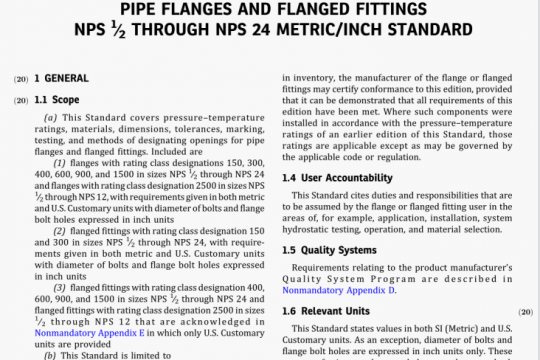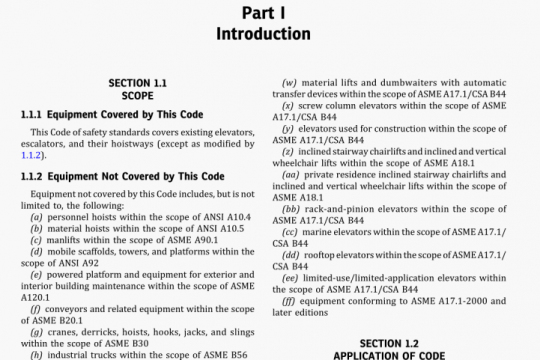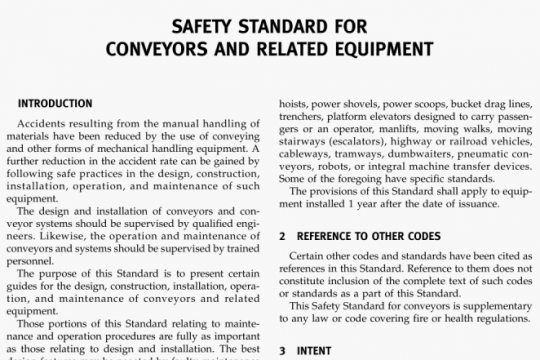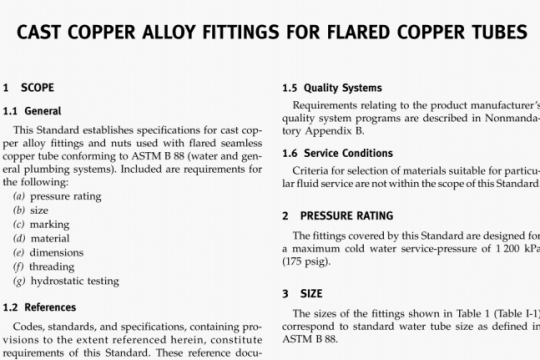ASME B30.5-2018 pdf free
ASME B30.5-2018 pdf free.Mobile and Locomotive Cranes Safety Standard for Cableways,Cranes, Derricks, Hoists, Hooks, Jacks,and Slings.
Within the general scope defined in Section I of the B30 Standard Introduction, American National Standard B30.5 applies to crawler cranes, locomotive cranes, wheel- mounted cranes, and any variations thereof that retain the same fundamental characteristics. The scope includes only cranes of the above types that are basically powered by internal combustion engines or electric motors. Side boom tractors and cranes designed for railway and automobile wreck clearance, digger derricks, cranes manufactured specifically for, or when used for, energized electrical line service, knuckle booni, trolley boom cranes, and cranes having a maximum rated capacity of 1 ton or less are excluded.
Special adaptions to the general types of machines covered by this Volume, where applicable, fall under this scope.
Some basic machine types within this scope are used alternatively for lifting service and for applications not considered to be lifting service. All of the requirements of this Volume are applicable to such machines when used for lifting service. However, at a minimum. Section 5-1.11, Chapter 5-2, and Section 5.3.1 of this Volume apply to machines when used in other than lifting service.
SECTION 5-0.2: DEFINITIONS
5-0.21 Types of MobiLe and Locomotive Cranes
commercial truck-mounted crane: a crane consisting of a rotating superstructure (center post or turntable), boom, operating machinery, and one or more operator’s stations mounted on a frame attached to a commercial truck chassis, usually retaining a payload hauling capability whose power source usually powers the crane. Its function Is to lift, lower, and swing loads at various radii (see Figures 5-0.2.1-1 and 5-0.2.1-2).
crawler crane: a crane consisting of a rotating superstructure with a power plant, operating machinery, and boom, mounted on a base and equipped with crawler treads for travel. Its function is to lift, lower, and swing loads at various radii (see Figures 5-0.2.1-3 and 5-0.2.1-4).
locomotive crane: a crane consisting of a rotating superstructure with a power plant, operating machinery, and boom, mounted on a base or car equipped for travel on a railroad track. It may be self-propelled or propelled by an outside source. Its Function is to lift, lower, and swing loads at various radii (see Figure 5-0.2.1-5).
wheel-mounted crane (multiple control stations): a crane consisting of a rotating superstructure, operating machinery, and operator’s station and boom, mounted on a crane carrier equipped with axles and rubber- tired wheels for travel, a power source(s), and having separate stations for driving and operating. Its function Is to lift, lower, and swing loads at various radii (see Figures 5-0.2.1-6 and 5-0.2J-7).
wheel-mounted crane (single control station): a crane consisting of a rotating superstructure, operating machinery, and boom, mounted on a crane carrier equipped with axles and rubber-tired wheels for travel, a power source, and having a single control station for driving and operating. Its function is to lift, lower, and swing loads at various radii (see Figures 5- 0.2.1-8 through 5-02.1-10).
5-0.2.2 GeneraL
acceosy. a secondary part or assembly of parts that contributes to the overall Function and usefulness of the equipment.
anti—two-block device: a device that, when activated, disengages all equipment functions whose movement can cause two-blocking.
auxiliary hoist: a secondary mechanism used either in conjunction with, or independently of, the main hoist.
axis of rotation: the vertical axis around which the crane superstructure rotates.
axle: the shaft or spindle with which or about which a wheel rotates. It refers to a type of axle assembly Including housings, gearing, differential, bearings, and mounting appurtenances.
backward stability: the ability of a crane to resist overturning in the direction opposite the boom while in a loaded or unloaded condition.
ballast: weight used to supplement the weight of the machine in providing stability for lifting loads (the term ballast is normally associated with locomotive cranes).ASME B30.5 pdf download.




